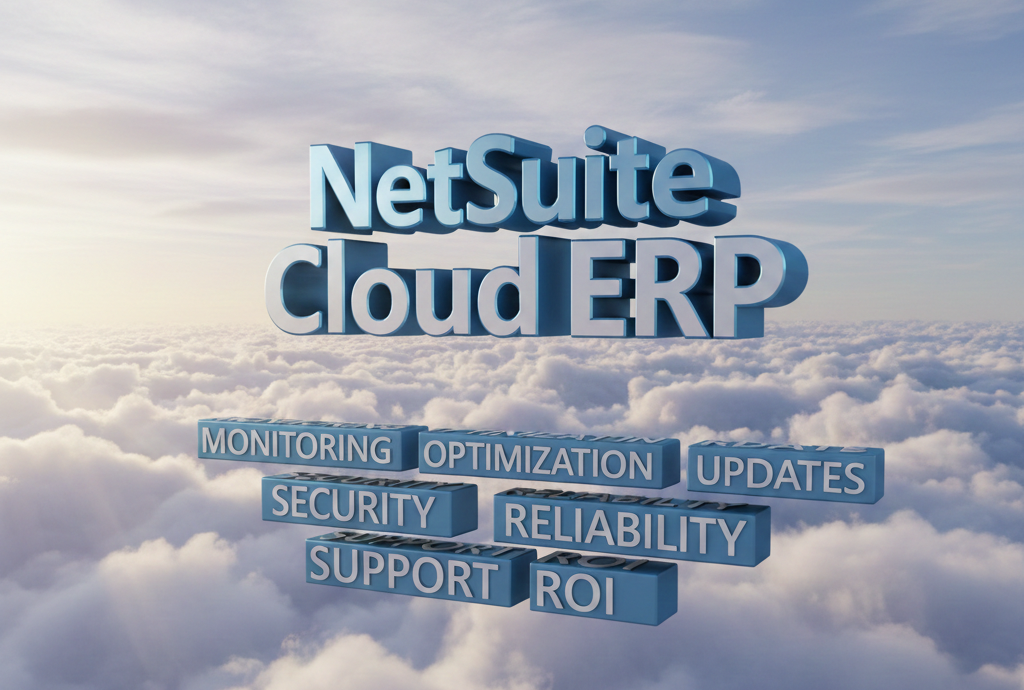In the competitive world of business management, choosing the right Enterprise Resource Planning (ERP) system is crucial for any company’s growth and agility. A well-functioning ERP ensures that daily operations run smoothly, data is managed efficiently, and business processes are optimized.
Two of the most prominent ERP systems in the market today are Microsoft Dynamics and NetSuite, both offering a wide range of tools for organizations to streamline their work processes. However, when choosing the most suitable and future-proof ERP system, many organizations find that switching from Microsoft Dynamics to NetSuite offers numerous advantages.
This blog delves into the key differences between these two systems, providing a detailed comparison that highlights why NetSuite is often considered the better choice for businesses seeking long-term growth and operational efficiency.
Microsoft Dynamics Overview
Microsoft Dynamics is a well-known ERP and Customer Relationship Management (CRM) solution with a global presence. It offers various modules that cover essential business operations, including human resources, sales, marketing, supply chain management, and more.
Although Microsoft Dynamics has been widely used for many years, its structure can often be complex, leading to confusion among users. One of the main challenges with Dynamics is that it is a hybrid solution that combines ERP and CRM, which may not always be the best fit for organizations looking for a streamlined cloud-based ERP experience.
Another point to consider is that Microsoft Dynamics was initially built as an on-premises solution. Over time, it transitioned into a cloud-based system, but this shift wasn’t smooth, as it relies on implementation partners to host the software in their data centers. As a result, many customers face limitations in terms of performance and flexibility when compared to more modern cloud-native solutions.
NetSuite Overview
NetSuite, on the other hand, is the first true cloud-native ERP system. Developed in 1998 and acquired by Oracle in 2016, NetSuite has remained a powerful, scalable, and comprehensive ERP solution that continues to evolve with the needs of modern businesses.
NetSuite provides an all-in-one platform that integrates various business processes, including finance, inventory management, sales, customer relations, and human capital management. With its cloud-first architecture, NetSuite offers real-time insights, centralized data, and enhanced visibility across the organization.
As the first cloud ERP, NetSuite was built from the ground up to operate in a cloud environment, ensuring that its architecture is optimized for speed, performance, and scalability. It is trusted by businesses of all sizes, from small startups to large enterprises, thanks to its flexibility, ease of use, and ability to handle complex business requirements.
Key Differences Between NetSuite and Microsoft Dynamics
- Cloud Architecture and Flexibility
NetSuite was designed exclusively as a cloud-based solution, which means it benefits from the latest advancements in cloud technology. This cloud-native design allows NetSuite to provide real-time data access, quick scalability, and easy customization without the need for on-premises hardware.
In contrast, Microsoft Dynamics was originally built as an on-premises system and later adapted to the cloud. This difference in origin results in Dynamics being less optimized for cloud functionality, and in many cases, customers still need third-party implementation partners to maintain their system.
- Upgrades and Version Control
NetSuite provides automatic biannual upgrades for all customers, ensuring they always have access to the latest features, security patches, and performance improvements. These updates happen without the need for customer intervention, and customizations are carried over seamlessly.
This is a significant advantage over Microsoft Dynamics, where updates are not automatic, and customers often avoid upgrading to newer versions due to the fear of disrupting integrations and customizations. This can lead to outdated software, security risks, and missed opportunities for optimization.
- Financial Management
Both Microsoft Dynamics and NetSuite offer strong financial management capabilities. However, NetSuite has an edge when it comes to subscription billing, a feature that is built into its core financial system.
NetSuite’s SuiteBilling application allows businesses to manage billing rates, schedules, and revenue recognition with ease. On the other hand, Dynamics requires additional applications for subscription billing, adding complexity and costs for businesses with recurring revenue models.
- Centralized Data and Reporting
One of the key benefits of any ERP system is the ability to centralize data and streamline reporting processes. NetSuite excels in this area by offering a broad range of pre-built dashboards and reports that cater to different roles and functions within an organization.
Even non-technical users can create new reports quickly, providing valuable insights without relying on IT support. While Microsoft Dynamics does offer some pre-built reports, its reporting functionality often requires significant customization and integration with third-party applications to achieve the same level of usability.
- Data Analysis and Business Insights
NetSuite provides advanced data analytics capabilities, making it easier to uncover business insights and improve decision-making. It can quickly pull data from various modules, such as finance, inventory, and customer relations, and present it in a way that helps businesses make informed decisions.
Dynamics, while also capable of providing data insights, often relies on separate modules with different codebases, which can lead to inefficiencies and delays in accessing real-time data.
- Integrations and Customizations
The ability to integrate with other systems is critical for any ERP platform. NetSuite is built on a unified codebase, which makes integrations and customizations easier to manage. It eliminates the need for middleware, and customers don’t have to worry about testing integrations after each update.
Dynamics 365 has multiple codebases, which complicates integration between its various modules. Businesses using Dynamics often need to purchase additional middleware solutions to pass data between applications, leading to increased costs and maintenance overhead.
- Human Capital Management
Managing a workforce effectively is key to business success, and NetSuite’s Human Capital Management (HCM) module provides a range of features that help companies manage their employees.
From HR administration to workforce management and performance tracking, NetSuite’s HCM capabilities are comprehensive. While Microsoft Dynamics does offer human resources management features, they are not as integrated into the ERP system, making it more difficult for businesses to manage employee data alongside other operational data.
- Customer Support and Accessibility
One major area where NetSuite stands out is customer support. NetSuite provides 24/7 customer service, and each customer is assigned a dedicated account manager to help with system-related issues.
Microsoft Dynamics, on the other hand, relies heavily on its implementation partners for frontline customer support, which is usually available only during the partner’s business hours. This limited support can be a significant disadvantage, especially for businesses operating in different time zones or requiring immediate assistance.
Benefits of Switching to NetSuite
- Reduced Operational Costs By moving to a true cloud-based ERP like NetSuite, businesses can significantly reduce their IT infrastructure and maintenance costs. There is no need for on-premises hardware, and updates are automatic, reducing the cost and complexity of system management.
- Scalability NetSuite’s cloud-first approach ensures that the system can grow with your business. Whether you are adding new users, expanding into new markets, or scaling operations, NetSuite provides the flexibility and scalability to accommodate these changes without requiring major system overhauls.
- Improved Decision-Making With real-time data and advanced reporting features, NetSuite gives businesses the tools they need to make faster, more informed decisions. Its ability to consolidate data from various departments and provide actionable insights helps businesses stay ahead of the competition.
- Enhanced Security NetSuite offers built-in security features such as role-based access controls and data encryption. Additionally, the automatic updates ensure that your system is always protected against the latest security threats. In contrast, the delayed update cycles of Microsoft Dynamics increase the risk of security vulnerabilities.
- Faster Implementation Because NetSuite is cloud-native and has a unified codebase, its implementation process is generally faster and less complex than that of Microsoft Dynamics. Businesses switching to NetSuite can go live quicker, reducing downtime and minimizing disruptions to daily operations.
Conclusion
Although both Microsoft Dynamics and NetSuite provide useful ERP solutions, NetSuite’s cloud-native architecture, advanced customization features, and automatic updates make it the better option for firms aiming to streamline operations and achieve long-term growth.
NetSuite provides real-time data, simplified reporting, and scalability, making it the better option for organizations seeking to streamline their processes and improve decision-making. By switching to NetSuite, businesses can enjoy enhanced efficiency, reduced costs, and improved overall performance.







